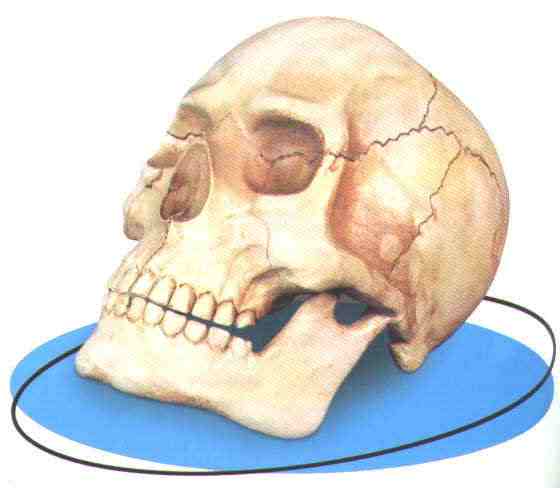Jérôme Kerviel has been portrayed as the sole culprit in the ‘rogue trading’ scandal that almost brought down a leading French bank. But could the unassuming young man have been stopped before the damage was done?
By Friday, January 18, Jérôme Kerviel, a junior suit in the banking world, was on the hook for €50 billion - the equivalent of about half of all the gold and currency reserves held by France. The sum also exceeded the entire value of the bank at which he worked.
The 31-year-old trader at Société Générale, one of France’s most prestigious institutions, had secretly set up a series of deals that were going horribly wrong. So wrong that they threatened the survival of the bank and the health of global financial markets.
Yet senior executives at the bank, which initially claimed that it had no inkling of Kerviel’s activities, yesterday admitted that managers had missed several warning signs over many weeks that would have revealed the apparent fraud.
Inside the glitzy offices of Soc Gen - as it is known in the banking world - in La Défense, the business district of Paris, Kerviel had clandestinely placed numerous bets that stock markets would rise – but markets were heading down.
Although his alleged fraud started last year, it kicked into overdrive this month. From January 7 Kerviel had staked €50 billion and by January 18 - just 10 working days later - his losses were already €1.4 billion. They would balloon if the stock markets fell any further.
Kerviel, who had worked his way up from the bank’s “back office”, its administrative area, to a junior trading position, was desperately trying to find a way out.
He was rolling over “futures contracts” into new deals, creating fictitious transactions to disguise his tracks and praying that the markets would turn in his favour.
That Friday, according to the bank, a manager noticed an anomaly, believed to be a deal timed for the forthcoming Sunday night. Officials contacted the counterparty – the organisation with which Kerviel had struck the trade - and discovered that it knew nothing about the account. The trade appears to have been one of the fictitious deals intended by Kerviel to mask his mounting losses.
At 10pm the bank’s top executives were informed and a frantic process began, in which Kerviel’s superiors started to examine the hundreds of thousands of trades that they suspected were compromised.
“We spent hours, all night, evaluating the rogue trades,” said a senior Soc Gen executive. The finger of suspicion pointed at Kerviel and the bank began to fear the worst. Kerviel was summoned to the office.
When he arrived on Saturday, he was brought in front of a panel of executives headed by Jean-Pierre Mustier, chief of Soc Gen’s investment banking.
Christophe Mianne, head of global equities and derivatives, told Risk, a publication for financial trading: “He didn’t want to tell the truth immediately.” Other insiders say that Kerviel initially defended himself, arguing that he was operating a “brilliant trading strategy”.
One banker said: “Playing the trades was all that concerned him. It was obsessive.”
Mustier later said: “When we interviewed him he imagined that he had discovered methods able to win money on the markets.”
A board meeting had already been scheduled for Sunday evening because the bank was poised to announce a massive write-off of losses incurred from the global sub-prime debt crisis. The aim was to get bad news out of the way so that Soc Gen, whose shares had halved in value in six months, could begin a recovery.
Kerviel’s rogue trades threatened to capsize the carefully crafted plans. If news leaked out that Soc Gen was facing other huge hidden losses, it could destroy the bank’s most precious asset: the confidence of its customers.
The directors faced a stark choice. They could let Kerviel’s trades - essentially bets that the market would rise - run in the hope of markets recovering. But that risked even greater losses if shares continued to fall. Or they could close the positions and take the hit.
It was no choice really. The potential losses if shares continued downwards could destroy the bank. “I did my duty and decided to unwind these positions,” said Daniel Bouton, the chairman. The bank later accepted a lifeline from two big American banks to escape the financial black hole.
The timing could not have been worse. Fears of recession and the debt crisis had sent shivers through the stock markets. On Monday morning the Asian markets were already falling by the time trading started in Paris. Soc Gen was a forced seller in plummeting markets – during that day leading shares in London collapsed 5.5% and in Paris 6.8%. This only compounded Soc Gen’s losses.
By the time it had managed to close out all Kerviel’s positions, the bank was down almost €5 billion. And Kerviel was being blamed for fuelling a stock market nosedive that spurred the American Federal Reserve into the biggest cut in interest rates for 25 years. He was described by the governor of the Bank of France as “a genius of fraud”.
For its part, Soc Gen at first portrayed it as triumph snatched from disaster. As Bouton said later: “Had we not acted swiftly, the loss could have been 10 times worse.”
Suspicions linger that the bank has not revealed the full story of the fraud. It initially claimed that Kerviel had so brilliantly manipulated its computer systems that he had completely covered his tracks.
Yesterday, however, Bouton admitted that some of Kerviel’s deals had triggered warning signs in recent months but the trader had “managed to convince the controllers that it was just a simple error on his part”.
It was a damning admission for a giant bank that a junior trader could have talked his way out of a €50 billion hole.
Is Kerviel really solely to blame? And could the same thing happen to other banks? THE son of a blacksmith and a hairdresser, Kerviel grew up in the town of Pont l’Abbé in Brittany. As a teenager he had a strong interest in judo and his former instructor remembers him as a “fighter”.
“He was a go-getter,” said Philippe Orhant. “His attitude was ‘I’ve got to win’. He wanted to take part in competitions.”
However, he was not a winner. “He had to stop because his knees were fragile,” said Orhant. “He was overweight and had a bad fall while playing basketball.”
Kerviel, nevertheless, kept on battling. About five years later, Orhant bumped into him and was amazed at the transformation: “He just planted himself in front of me and asked me if I knew who he was. He had lost so much weight that I didn’t recognise him. He looked very handsome and he was with a pretty girl.”
Kerviel had also discovered an enthusiasm for finance, although he is remembered by Gisèle Reynaud, who taught him at Lyons University where he took a master’s degree in finance, specialising in “organisation and control of financial markets”, as unremarkable. “He didn’t distinguish himself from the others,” she said.
Dominique Chabert, another teacher at the university, said: “If he’s a genius, we didn’t notice it here.”
Valérie Buthion, head of the department, noted that Lyons is not a place where whiz-kids of the financial markets study anyway. “People who want to be golden boys or clever in the market don’t come here,” she said. “The show-offs don’t come here. This is the hidden part of the iceberg.”
Kerviel’s entry into the world of mega-buck banking was certainly modest. According to the CV that he sent to a rival bank, he joined Soc Gen in August 2000 and for two years he worked in the “middle office - referential team”.
In layman’s terms, he was part of the team that was responsible for assessing how much the bank was putting at risk in its trading operations. It meant that he learnt all about the computer systems that underpin trading, especially in “exotic” products such as futures, options and other derivatives.
He gradually moved up the ladder, becoming a “trader’s assistant” whose job it was to analyse the risks and strategies taken by traders. He was learning more and more about the intricacies of the bank’s systems.
André Tiran, dean of the faculty at Lyons University, said: “It’s a bit like becoming a thief with training as a locksmith. If you’re good at being a locksmith, then to steal is easier.”
In March 2004, according to the CV, Kerviel became a fully-fledged “trader and market maker for Delta One products”. Delta One was the name given to a certain type of financial trading, but Kerviel was not the high-flyer that he seems to have wanted to be.
He was being paid a salary and bonus of about €100,000 a year - peanuts by the standards of big traders. A member of Soc Gen’s equity derivatives section said: “He was just an average kind of person.” Another employee said: “He spoke little and he’d answer questions with yes or no.”
Neighbours around his modest apartment in the Parisian suburb of Neuilly-sur-Seine said Kerviel lived quietly and kept to himself. “He was very young, handsome, a beautiful one,” said Collette Thomas, who lives on the floor below Kerviel. “But he was not at all talkative.” Her daughter said: “He used to climb the stairs two at a time and disappear.” He was a loner, as Anne Gillier, who works nearby in an estate agent, noted. “He was physically seductive, always elegantly dressed. But he was alone. I always saw him alone,” she said.
On Facebook, the social networking site, his home page had accumulated only 11 friends before the scandal was uncovered. Those who were there trickled away as the news of his problems broke. By Thursday night he had just four. The next morning there were none.
Within Kerviel’s outwardly quiet life was significant turmoil. About three years ago his father became seriously ill.
“I was a good friend of his father,” said Pierrot Campion, who lives in Pont l’Abbé. “He had problems with his lungs for a whole year. He needed oxygen to help him breathe and he died of a heart attack. I saw Jérôme at the funeral. He was crying a lot. His dad’s death hit him very badly.”
Later Kerviel’s girlfriend, with whom he had been for several years, apparently left him. (Reports yesterday that he had been married were the result of confusion with his brother Olivier.)
Did these personal blows spur him to “win” at any cost at work? ACCORDING to Soc Gen, Kerviel spent hours burrowing into the bank’s computer systems, disabling and bypassing multiple checks and balances.
The bank alleges that he hacked into other traders’ systems and set up deals using their accounts; that he created a fictitious client so that he could trade as if setting up deals on its behalf; that he circumvented limits to the size of trades; and that he defeated credit control checks that should have picked up rogue trades, especially those that put the bank’s own money at risk.
Kerviel was apparently able to unpick or switch off all these checks. In addition, he master-minded a way of covering his trading. He apparently created fictitious trades designed to neutralise the big bets he was making so that the bank’s systems appeared to show that everything was in balance. In banking-speak, his positions were outwardly “hedged”.
Mustier said last week: “Every two or three days he was changing his position. He would input a transaction that would trigger a control in three days and before that happened he would replace it with a different one.”
People in the office noted his oddity. “He was a strange boy,” said one former colleague.
“He never took holidays and when he left the office he refused to let other traders take over his positions.”
Another said: “He is either a crook or autistic, like a child in front of a video game, multiplying enormous risks, convinced that he has nine or 10 lives.”
His mother worried that the pressure was harming her son. “When he came home, he spoke all the time about the bank and seemed tired, taking his work so seriously,” a family member said.
“His mother had started to worry about him, to the point of advising him to resign one day to find a calmer job.”
He certainly put in long hours. His neighbours reported that he would often return to his flat, apparently from work, very late at night. He had reportedly not had a holiday for eight months.
The pressures in financial trading are also notorious. According to a financial union official representing Soc Gen employees, one of the bank’s traders committed suicide last year by jumping off a building. “He was at the end of his tether,” said Michel Marchet. “So he jumped.”
An official in the company’s human resources department said she did not know about any suicides and had been asked not to discuss the company’s affairs with the press.
Yet many observers find it mind-boggling that a leading bank failed to notice or properly check thousands of trades worth billions of euros.
Jean-Paul Betbèze, chief economist at Crédit Agricole, said: “In the bank in which I work, I do not believe it would be possible. In [Soc Gen] I do not believe it either. That we have created financial products that we are misusing, that worries me.”
In London, one senior banker who has run trading desks at leading banks said: “If this is true, Kerviel has abused pretty much every department in the Soc Gen investment bank. There is no way whatsoever, if you have anything like the normal controls, that this should have happened.”
Soc Gen’s explanation of why Kerviel allegedly committed the huge fraud was less than convincing. It even suggested that he had deliberately tried to lose money.
Philippe Collas, from the bank’s global investment management division, said: “He made no money out of things, nothing, not a cent.
“In December things were going very well for him, then he panicked, he gambled against the market, he started deliberately losing to try and hide it, to reduce the possibility that he’d be caught.
“What was his motive? I don’t know, maybe he wanted to prove himself. This is something that makes no sense. He acted alone and didn’t get rich on it.”
Other bankers wondered whether Soc Gen suspected fraud sooner, took longer to unearth its full extent and the perpetrator or perpetrators, and had looser controls than it has admitted.
They reckon that Soc Gen would have faced “margin calls” - demands for cash payments - as Kerviel’s positions deteriorated.
Also, if Kerviel had created fictitious positions to hedge against his contracts, there would have been no compensating cash coming in to mask the outflows. Alarm bells should have rung.
On Friday a trader at the bank’s London office suggested that events had unfolded in a more complicated way than Soc Gen has admitted. “[Kerviel] was doing it in the boss’s books, so when it emerged that something was wrong it was the boss who was called in and the boss who was fired,” said the trader.
Soc Gen sacked several other staff when the scandal emerged, including Luc François, head of the equity derivatives division, and Jean-Pierre Lesage, head of IT and human resources for the corporate and investment banking arm. But publicly all the blame has been heaped on Kerviel. To the amazement of many, the bank also failed to call in the police or detain Kerviel.
Didier Corlardeau, president of a shareholder action group, said: “Kerviel’s a scapegoat. We are sure that the bank is hiding something. We’re asking the police to seize the computers to find out exactly what happened. I would not be at all surprised if the investigation brings out all sorts of things.
“For one individual to do what Kerviel is said to have done, it is not possible.”
Yesterday the scepticism seemed to be merited when Soc Gen admitted that questions had arisen over Kerviel’s activities. He had come to the attention of back-office supervisors several times in recent months. But Mustier said: “In some cases he would tell them it was a mistake. He would convince them, for example, by cancelling a position.”
Such leeway is perhaps partly understandable because Kerviel was involved in “Delta One” trading, which involves massive amounts of money but is regarded as relatively low risk. Broadly speaking, banks balance their bets that the markets will rise with their bets that they will fall. They make their money from the small gaps between their positions and from interest on clients’ money.
Kerviel was using what are called “plain vanilla” futures – relatively simple financial instruments of the sort used by Nick Leeson, the rogue trader who brought down Barings bank in 1995.
Soc Gen was one of the biggest players in the derivatives market and the extent of Kerviel’s rogue trades - which apparently began several months ago - may have passed unnoticed in the huge volume of transactions.
One British expert in the risk management systems of banks said candidly: “To pull off this kind of fraud is not necessarily that difficult. Systems like Soc Gen’s make checks but they are done on exceptional trades. If it appears that you are not doing anything out of the ordinary, then the system won’t flag it. If you are not exceeding the account’s limits, you will not be checked.
“Banks rely on the fact that most procedures work because everyone is basically honest. This is fine until somebody who isn’t honest comes along.” AFTER the scandal broke, Kerviel is believed to have holed up in his brother’s flat in Paris, accompanied by his mother. A relative said that he was “not doing well”.
Police have searched his Paris apartment in Neuilly, as well as Soc Gen’s headquarters. At about 2pm yesterday Kerviel arrived at a Paris police station and was taken in for questioning. The bank has lodged complaints relating to three main charges - falsification of bank records, fraudulent use of such records and computer fraud.
Kerviel’s family and lawyer have said that he is innocent.
Kerviel’s aunt, Raymonde Kerviel, on being told of her nephew’s arrest, said: “I have not been able to reach Jérôme or his mother to offer them support. My feeling is he is not capable of this and that there is more to it than meets the eye.”
Kerviel’s side of the story will illuminate some interesting details. Was Soc Gen’s account of his activities entirely accu-rate? When did he suspect that it was on to him?
It has also emerged that he may have been seeking a banking job in London before he was rumbled by Soc Gen in Paris. A recent copy of his CV - written in English and stating the international dialling code for France - has been circulating in the City. At least one of Kerviel’s contacts on Facebook, Denis Righezza, 25, a Soc Gen trader, had already worked in London. Was Kerviel seeking a way out of his apparent deception?
Kerviel may have lost his original Facebook friends but he has acquired a peculiar following on the internet. By yesterday afternoon there were 20 Facebook groups dedicated to him. The Jérôme Kerviel Fan Club had more than 700 members.
About 10 fake profiles were set up, placing him everywhere from Paris to the Dominican Republic. A separate website, Roguefrenchbanker.com, was registered on Thursday and by yesterday was festooned with advertisements inviting surfers to “try your hand” at stock market trading.
Repercussions of the debacle are likely to go far beyond the unassuming young man from Pont l’Abbé.
In Britain, the City regulator has ordered financial institutions to examine their risk management systems for derivatives trades and may publish new guidelines on their use.
In Paris, Soc Gen, which earns a third of its profits from derivatives trading, is now seen as vulnerable.
Nicolas Sarkozy, the French president, is furious at not being told about the fraud immediately and has demanded a swift report into the affair from Christine Lagarde, his minister for the economy.
The monumental fraud will also fuel concerns about the overall structure and vulnerability of modern financial trading, which is already under scrutiny because of the sub-prime crisis.
Yesterday Sarkozy criticised a financial system that was “out of its mind”.
“The point of a financial system is to lend money for economic activities which, in turn, generate profits,” he said.
“It is not to go and speculate on different activities which create enormous flows and profits in a few hours.”
One senior London banker said that systems should be able to stop frauds such as the one at Soc Gen - otherwise “all of us in the financial markets should be quaking in our boots”.
Laughing all the way from la banque wob head
City traders, always quick to see humour in adversity, were swapping jokes about the Société Générale debacle last week. Among favourites were:
A picture of a stereotypical Frenchman saying “Combien!!???” It was captioned “Soc Gen’s risk manager” mocking the French for their short working hours. It began: ‘Friends of rogue trader Jérôme Kerviel last night blamed his $7 billion losses on unbearable levels of stress brought on by a punishing 30-hour week. ‘Kerviel was known to start work as early as nine in the morning and still be at his desk at five or even five-thirty, often with just an hour and a half for lunch. One colleague said: ‘He was, how you say, un workaholique.’ I have a family and a mistress so I would leave the office at around 2pm at the latest, if I wasn’t on strike. But Jerome was tied to that desk’
The website of Risk magazine, which declares itself ‘the world’s leading fi nancial risk management magazine’. In this month’s issue it names its equity derivatives house of the year. The winner: Société Générale
(Jan. 27) - Last fall Hulk Hogan learned about his pending divorce from a reporter. Now he's being accused of trying to pull a fast one on his future ex-wife.



















